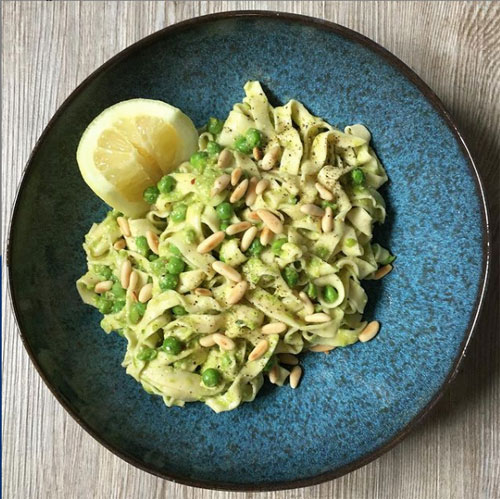Tagebuch Montag, 10. Mai 2021 – Bildrechte
Der Verband deutscher Kunsthistoriker, der nebenbei seit Längerem zu Recht über seinen Namen diskutiert, veröffentlichte gestern einen Leitfaden für Bildrechte. Der ist vermutlich nicht nur für Kunsthistorikerinnen interessant, deswegen verlinke ich den gerne.
—
Bildrechte waren gestern auch mein Thema am Schreibtisch. Die Bilderliste ist final, ich arbeitete weiter die Institutionen ab, von denen ich Reproduktionen brauche und erfuhr nebenbei einiges, was mich etwas mehr aus der Bahn warf, als ich zunächst gedacht hatte. Ich kann hier nicht näher ins Detail gehen, weil ich nicht weiß, was davon schon für die Öffentlichkeit bestimmt ist, aber ich muss meine Diss-Einleitung großflächig überarbeiten, aus Gründen, wie es so schön heißt. Ich haderte mal wieder damit, dass Wissenschaft nie final ist, dass jede Erkenntnis morgen schon veraltet sein kann und dass selbst cleverste Einleitungen, die die Leserinnen mit den ersten Sätzen in ihren Bann ziehen, nicht davor gefeit sind, von tagesaktuellen Geschehnissen pulverisiert zu werden. Gnarg.
—
Immerhin was Sch√∂nes gekocht. Ich hatte noch Feta, der dringend wegmusste, bei ‚ÄûMasterchef Australia‚Äú gab’s eine Pasta-Challenge, also wollte ich dringend Pasta selbst machen und dabei den Feta verarbeiten. Es wurde dann eine Variation von einem Rezept aus Ottolenghis ‚ÄûJerusalem‚Äú. Erstmal simple Tagliatelle machen, zwei Eier, 150 g Mehl plus noch mehr Mehl, weil die Eier anscheinend riesig waren. Kneten, bis die Teigkonsistenz stimmt, einwickeln, rumliegen lassen.
In einer Pfanne röstete ich zunächst Pinienkerne, entfernte sie und aromatisierte in derselben Pfanne Öl mit Thymianzweigen, Knoblauch und Chiliflocken. In einem Mixbecher pürierte ich TK-Erbsen mit Feta, ein bisschen Zitronensaft und Öl, gab das Gemisch mit weiteren unpürierten Erbsen ins Öl, nachdem ich die Thymianzweige entfernt hatte. Tagliatelle kochen, bis auf einen kleinen Rest Kochwasser abgießen, den Pfanneninhalt mit den Nudeln und dem Kochwasser vermischen und mit Zitroneneckchen, Pinienkernen und ordentlich Pfeffer drüber servieren. Das koche ich heute mit der zweiten Teighälfte gleich nochmal.

Nudeln gemacht statt Sport. Passt schon.
—
Ich habe es nur wenige Tage geschafft, dem Account von „Sophie Scholl“ auf Insta zu folgen. Bestimmt gut gemeint und auch professionell gemacht, aber ich finde es creepy.
Im Deutschlandfunk lief vor ein paar Tagen eine gute halbe Stunde zu Scholl, und das Buch der dort interviewten Autorin liegt in den nächsten Tagen für mich in der Stabi.
—
The Atlantic ver√∂ffentlicht seit L√§ngerem Artikel in einer Serie namens ‚ÄûInheritance‚Äú. Heute erschien ein Essay von Clint Smith: Why Confederate Lies Live On. Sehr lesenswert und mit vielen Links im Text. Hier nur einer davon, Five Books to Make You Less Stupid About the Civil War, in dem nat√ºrlich auch das Buch vorkommt, das ich seit Jahren als das beste √ºber den B√ºrgerkrieg rumempfehle: Battle Cry of Freedom. Gibt’s auch auf deutsch, hier eine Rezension dazu.
‚ÄûOnce one of the most successful sugarcane enterprises in all of Louisiana, the Whitney is surrounded by a constellation of former plantations that host lavish events‚Äîbridal parties dancing the night away on land where people were tortured, taking selfies in front of the homes where enslavers lived. Visitors bask in nostalgia, enjoying the antiques and the scenery. But the Whitney is different. It is the only plantation museum in Louisiana with an exclusive focus on enslaved people. The old plantation house still stands‚Äîalluring in its decadence‚Äîbut it‚Äôs not there to be admired. The house is a reminder of what slavery built, and the grounds are a reminder of what slavery really meant for the men, women, and children held in its grip. […]
Before the coronavirus pandemic, the Whitney was getting more than 100,000 visitors a year. I asked Yvonne if they were different from the people who might typically visit a plantation. She looked down at the names of the dead inscribed in stone. “No one is coming to the Whitney thinking they’re only coming to admire the architecture,” she said.
Did the white visitors, I asked her, experience the space differently from the Black visitors? She told me that the most common question she gets from white visitors is “I know slavery was bad … I don’t mean it this way, but … Were there any good slave owners?”
She took a deep breath, her frustration visible. She had the look of someone professionally committed to patience but personally exhausted by the toll it takes.
“I really give a short but nuanced answer to that,” she said. “Regardless of how these individuals fed the people that they owned, regardless of how they clothed them, regardless of if they never laid a hand on them, they were still sanctioning the system … You can’t say, ‘Hey, this person kidnapped your child, but they fed them well. They were a good person.’ How absurd does that sound?”
But so many Americans simply don’t want to hear this, and if they do hear it, they refuse to accept it. After the 2015 massacre of Black churchgoers in Charleston led to renewed questions about the memory and iconography of the Confederacy, Greg Stewart, another member of the Sons of Confederate Veterans, told The New York Times, “You’re asking me to agree that my great-grandparent and great-great-grandparents were monsters.”“